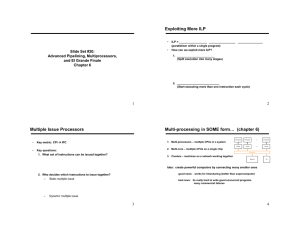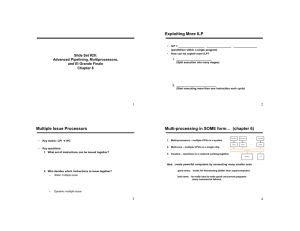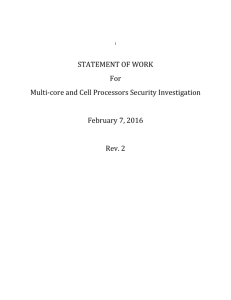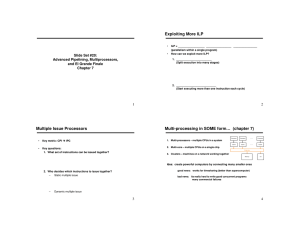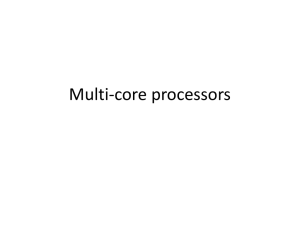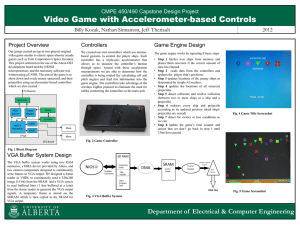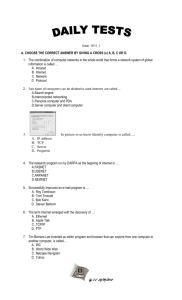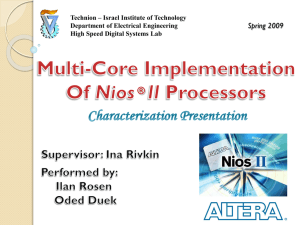Presentation Slides
advertisement
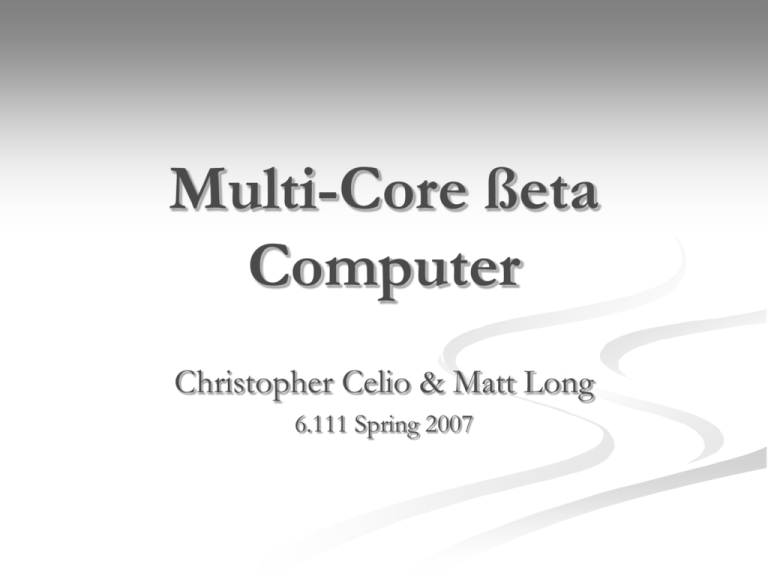
Multi-Core ßeta Computer Christopher Celio & Matt Long 6.111 Spring 2007 Project Goals Building a functional multi-core computer around the Beta processor (think 6.004 Labs on steroids) Visually demonstrate the benefits of multiple cores with “The Game of Life” Managing access to memory amongst many Beta processors via a Memory Manager and possibly data caches. The Game of Life A ‘zero-player’ game, user sets initial state, then observes cellular evolution For each generation, a cell is either live or dead based on its number of direct neighbors in the previous generation Image courtesy of Wikipedia Cells evolve indefinitely on an infinite (in our case 240 x 240) grid System Architecture The 2-Stage RISC Harvard Beta Processor The OS & Software Using the 6.004 mini OS as a starting point Software written in Assembly and compiled by BSIM Python script creates software.v file, which instantiates BRAM and initializes the memory to the Beta machine code How will the multi-cores communicate? Short-answer: software Each CPU knows its ID and total_CPU_Count Game of Life: 4 steps per round Image courtesy of Wikipedia - Compute all cells (all cpus read static image in Memory) - Wait (for all to finish) - Update all cells (refresh the static image) - Wait Display Controller char_code Data from memory manager 80 x 40 Character RAM position cell_state Game Of Life State cell_num To Monitor Display Controller (VGA) char_code char_data 128 Character ROM Two Display Modes Console Mode: Textual: 80 x 40 character display with prompt Interact with the Operating System Launch The Game of Life Game Mode: The Game of Life cellular grid System performance statistics generations/second instructions/second processor usage VGA Controller Module Driven by a clock with twice the frequency of the VGA pixel clock Allows memory access and data processing to occur within each cycle of the pixel clock Reads display data from character and/or game state RAMs 128 Character ROM Conclusion Questions? Why The Game of Life? Simple, yet computationally intense: Continually calculate the number of neighbors for each of 50,000+ cells to determine next generation Well suited for a multi-core system: Time needed to compute each generation decreases linearly as more processors are added Fun and interesting way to visually observe the benefits of multiple processors
